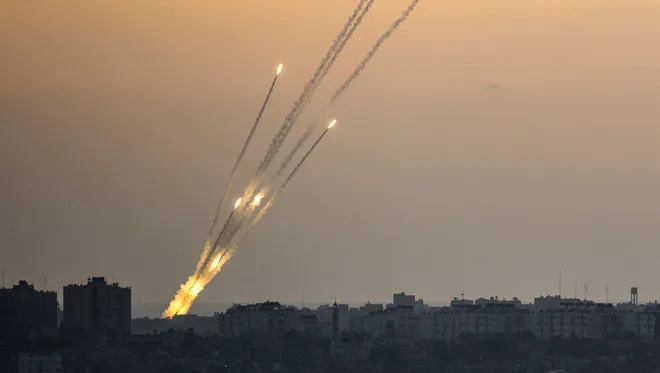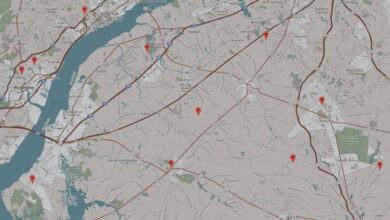
Israel and Hamas have fought at least 10 wars and skirmishes in the past decade. All have resulted in the deaths of civilians, uneasy truces and preparations for the next confrontation.
But the latest conflict is unique because of technological advances in weaponry on both sides and a transformed political landscape in the Mideast that, in this rare instance, favors Israel.
Here are five key factors shaping the fighting that is now in its third week:
• Rockets’ range: Hamas, a U.S.-designated terrorist group that governs the Gaza Strip, has increased the range of its rockets significantly since 2012. Lt. Col. Peter Lerner, a spokesman for the Israeli Defense Forces, says Hamas has been able to obtain a Syrian-made rocket that can travel up to 100 miles, representing “a huge improvement on their capability.”
Yousef Munayyer, executive director of the Palestine Center, a think tank in Washington, says Hamas militants have been able to modify the rockets to develop even greater range.
The result is that the rockets reach well beyond southern Israeli communities near Gaza that have felt threatened for years. This time, rocket fire has disrupted life in Israel’s major cities, from the coastal financial and cultural center, Tel Aviv, to the capital, Jerusalem.
• Israeli deaths: The fighting has caused the largest number of Israeli fatalities since its 2006 war in Lebanon with the Iran-backed terrorist group Hezbollah. Thirty-two Israeli soldiers have died and one is missing in battles with Hamas militants, who have fought more aggressively than in the past. Palestinian rockets also have killed three civilians, including a Thai guest worker on Wednesday.
On Sunday, Hamas said its fighters lured two armored vehicles into a field it had rigged with explosives. Thirteen Israeli soldiers were killed in a combination of attacks that day, the most in any one day since the war with Hezbollah.
Palestinian deaths — 640, according to the Palestinian Maan News Agency — are to date about half the 1,400 who died in Israeli airstrikes and a ground operation in 2008-09.
• Hamas’ political isolation: The fighting started with Hamas weaker politically than it has been in a long time. In part, that’s because its main political and financial backers, the Muslim Brotherhood in Egypt and the Assad regime in Syria, are busy fighting for their own survival and are unable to provide assistance.
In its last conflict with Israel in 2012, Hamas, the Palestinian branch of the Muslim Brotherhood, had a close partner in Egypt, which was run by the main Brotherhood group. President Mohammed Morsi, a key Brotherhood leader, brokered the 2012 cease-fire that Kerry and other diplomats are trying to revive.
Today, Egypt, which controls Gaza’s southern border, is run by a military regime that deposed and jailed Morsi and outlawed the Brotherhood on charges that it tried to impose an Islamist dictatorship.
Egypt closed Hamas’ tunnels to the Sinai Peninsula to prevent munitions crossing into Egypt after a series of terrorist attacks against Egyptian soldiers and civilians that Egypt said it traced to Gaza. Hamas used those tunnels to smuggle goods and weapons into Gaza, and to fund its operations though smuggling fees. Egypt has also blocked the flow of cash from countries such as Qatar into Gaza.
Egypt, which has condemned Hamas during the current fighting, has proposed a cease-fire on terms the militant group has rejected because it wants the Sinai closures lifted.
The closures have made it impossible for Hamas to pay its 40,000 government employees and produced “desperation and panic” in Hamas, “which is why it keeps fighting,” says Hussein Ibish, a senior fellow at the American Task Force on Palestine. “Hamas is trying to break out of this blockade in a whole new way because the blockade is different. They’re broke and unable to move.”


